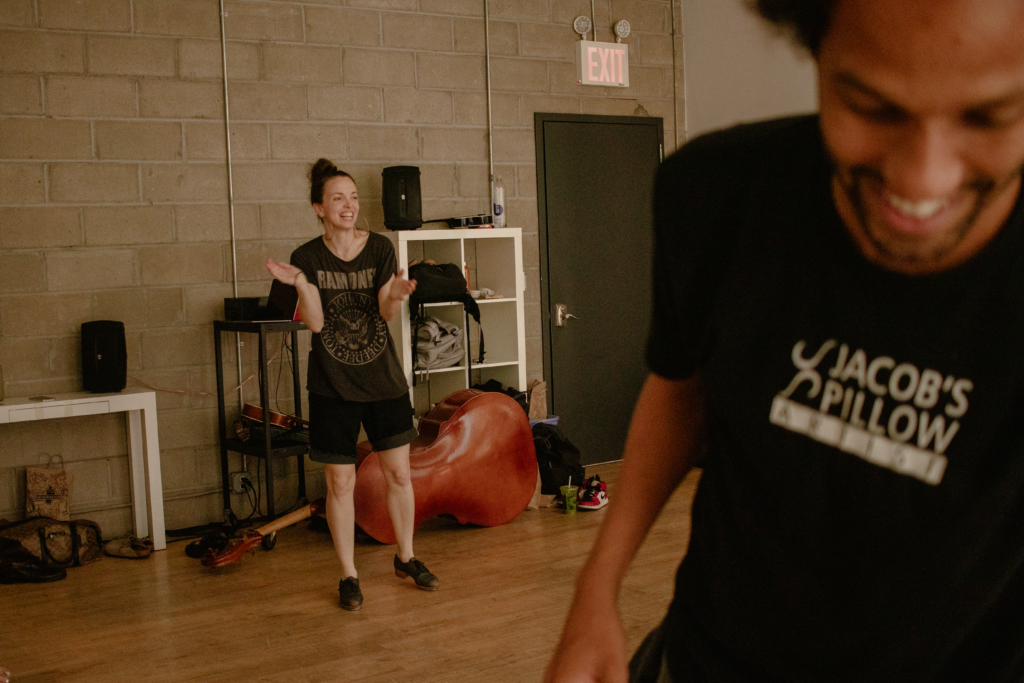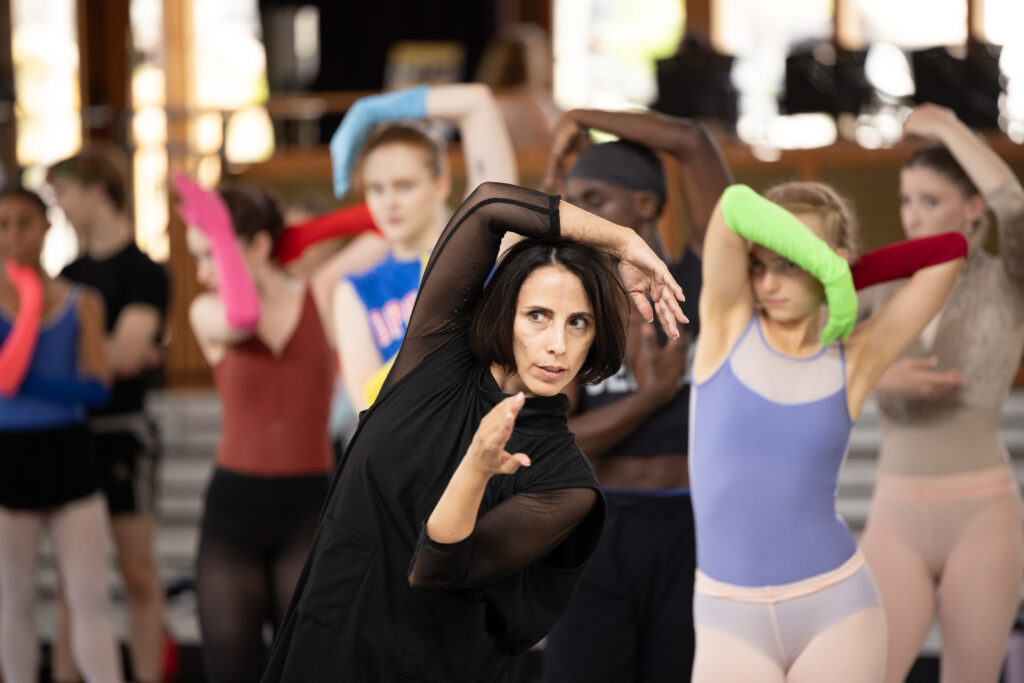Some of the largest financial awards a dance artist can win are the ones you can’t even apply for. You’re simply told one day that you’ve won, say, up to $550,000, in the case of the Doris Duke Artist Award, or $800,000, in the case of the MacArthur “genius grant.” And those two grants are almost entirely unrestricted, meaning that after paying taxes on the money, artists can do whatever they want with it, personal or artistic—buy a house, fund a new piece, pay off debts, grow their company.
The artists who win them are essentially well-deserved lottery winners. But are those windfalls as life-changing as they seem to be?
Not all grants are six figures, or come with no strings attached. But even a smaller award can feel like a jackpot considering the financial challenges that often come with being a dancer or choreographer. Five artists who’ve received major grants spoke about the opportunities those awards allowed them, and how they changed—or didn’t change—their life, work, and art.
Donald Byrd
2011: United States Artists Fellowship, $50,000
2016: James W. Ray Distinguished Artist Award, $50,000
2019: Doris Duke Artist Award, $275,000
By 2019, Donald Byrd had amassed so much debt from back taxes that he had decided “I’ll die, and then I won’t have to pay it,” he says. But then Byrd, who is now 75, received the Doris Duke Artist Award, and his relationship to money changed forever.

Byrd had received large grants before, which he had used to fund travel to broaden his aesthetic sensibilities and make work in other countries. But though much of the Duke award went toward fulfilling his delinquent tax responsibilities, the grant also came with a financial planner, and shifted his entire worldview. “I come from a generation of artists who expected to go to our graves poor, if we’re lucky, but probably poverty-stricken,” he says. “I used to have a lot of fear around money, and my emotions determined what I did in regards to money. I discovered that that does not necessarily have to be the case.”
Getting rid of his tax debt also allowed Byrd to free himself of what he calls the “Damocles’ sword” hanging over his head. “I felt liberated. I didn’t realize how much I was carrying around all those years with that,” he says. “I went through a phase where I was afraid to look at my mailbox. I was haunted by it. So dealing with that allowed me to be inside the world of the imagination more completely.”
Michelle Dorrance
2013: Jacob’s Pillow Dance Award, $25,000 unrestricted
2014: Herb Alpert Award in the Arts, $75,000
2015: MacArthur Fellowship, $625,000 over five years, unrestricted
2016: United States Artists Fellowship, $50,000
2017: Ford Foundation Art of Change Fellowship, $50,000
2018: Doris Duke Artist Award, $275,000
Before she received the MacArthur “genius grant” in 2015, tap dance choreographer Michelle Dorrance thought she was going to have to take a forced break from her company, Dorrance Dance. She was about to go bankrupt and had run out of credit cards to max out to fund the troupe.
That $625,000 award changed everything: Not only was Dorrance able to pay off her debts and invest in the infrastructure that would support her company for years to come, but she was given a new sense of purpose—and obligation. “Receiving that grant, it’s almost like I could never say no again for the rest of my life” she says. “I’ve been given this incredible thing, so how dare I not do ‘blank’?”

It wasn’t until her Doris Duke Artist Award in 2018 that Dorrance used any of her grant money to invest in her personal future. “It was the first grant I received where they make you responsible for setting up savings for yourself—it’s a requirement,” she says. “That was a turning point for me. It’s the only reason why I have any retirement savings.”
Dorrance also has some of her MacArthur funds still stashed away, but for a very specific purpose. “I put the last third of it in an investment account, in order to support a space that the tap community, and the larger percussive-dance community in New York City, can own,” she says. “I believe in the community ownership of it.”

Miguel Gutierrez
2010: United States Artists Fellowship, $50,000
2010: Guggenheim Fellowship, $40,000
2010: Foundation for Contemporary Arts Grant, $25,000
2016: Doris Duke Artist Award, $275,000
In 2010, Miguel Gutierrez won three separate grants in a single year, totaling $115,000. He used the Guggenheim Fellowship towards the research and development of a new work, and the other two, the United States Artists Fellowship and the Foundation for Contemporary Arts Grant, to pay off his credit card and tax debt. By 2011, “I was back to having to do what I always do,” he says, “which is apply for things and see what I can put together.”
When he found out he’d won the Doris Duke Artist Award in 2016, the first word that came to mind was “future.” He put the money toward the purchase of his New York City apartment.

“That award made me think more intelligently about how to set myself up for success for the next chunk of my life,” he says. “That has led to other decisions that I’ve made about going back to school, and about getting a job.” (Gutierrez is now a tenured faculty member at UCLA.)
Gutierrez acknowledges that what he calls the “Santa Claus” system of artist grants isn’t perfect. “The lucky few get picked, and the unlucky many are wondering if their day will ever come,” he says. “It maintains a sense of inequity. There is still an essential issue here, which is the precarity of the field. So it’s a double-edged sword. But it’s a pretty nice sword.

Rosie Herrera
2016: United States Artists Fellowship, $50,000
2024: Knight Choreography Prize, $30,000 unrestricted, $20,000 in programmatic support
2024: Guggenheim Fellowship, $60,000
When Rosie Herrera was awarded the United States Artists Fellowship in 2016, many people told her to use the $50,000 to buy a house. But she didn’t. “That money went into making work, into paying dancers and collaborators, into rehearsal space,” she says. “I used it slowly over time in the most economical way possible. I really stretched that money.” She promised herself that the next time she won a big award, she’d spend it on herself.

Eight years later, Herrera won both the inaugural Knight Choreography Prize, from NCCAkron, and the Guggenheim Fellowship. But figuring out what, exactly, investing in herself looks like has been complicated. “I thought it would be so simple, but it’s turned out to be a provocation for me to think about my life,” she says. The fact that governor Ron DeSantis recently cut all state funding for the arts in Florida has further tested the Miami-based choreographer’s promise to herself. Though Herrera’s company doesn’t receive much funding from the state, “the creative partners we have producing and presenting work are really threatened,” she says. “It’s becoming increasingly precarious to make plans for the future.”
Still, Herrera appreciates the opportunity to make her artistic life more sustainable. “And, hopefully,” she says, “I can use that as a catalyst for more sustainable working models for my community that is really suffering right now.”

Annabelle Lopez Ochoa
2019: Jacob’s Pillow Dance Award, $25,000 unrestricted
Ballet choreographer Annabelle Lopez Ochoa admits that the $25,000 she was awarded in 2019 as part of the Jacob’s Pillow Dance Award was too small to be life-changing. But it did give her some freedom.
When creating a short work for The Washington Ballet, for example, one scenic element she wanted was beyond the company’s budget. So Ochoa decided to purchase the scenery herself, using part of her award money. Similarly, while working on a ballet about Coco Chanel for the Hong Kong Ballet, Ochoa used award funds for a research trip to Paris. The remaining money became a sort of safety net, allowing her to take low-paying but close-to-her-heart gigs in Colombia and the Dominican Republic.

Ochoa is the rare ballet choreographer to have received a substantial monetary award. This seems partially related to the fact that most ballet choreographers make work within the structures of large, relatively well-funded ballet companies, unlike artists in other genres who often make work for their own small companies, and who may prioritize paying their dancers over paying themselves.
But Ochoa says this grant changed her perspective on money, even when she’s working with those larger ballet companies. “It taught me how much a set costs, and everything you need to think about—it has to arrive here, it has to be stored there, you need a tech person to move it,” she says. When an artist does have a little financial wiggle room, she says, “it creates air in your imagination.”


